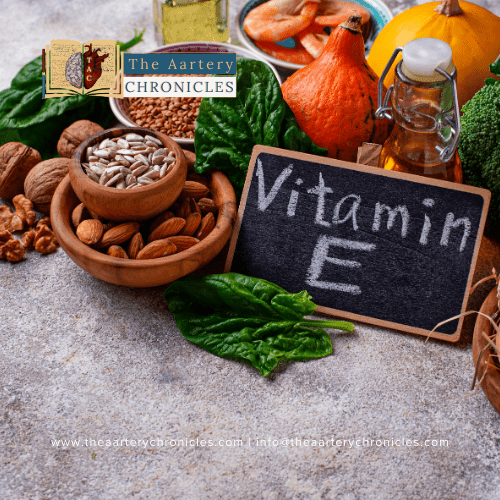Reading Time: 5 minutes Vitamin A in a Clinical Perspective: Roles, Sources, Toxicity, and Significance Vitamin A, a fat-soluble nutrient encompassing retinol and retinoic acid, is a pivotal element in human physiology. Its multifaceted roles encompassing vision, immunity, reproduction, growth, and development make it an essential component of a balanced diet. In this clinical exposition, we delve deep into the various facets of vitamin A, including its physiological functions, dietary sources, implications of deficiency and toxicity, and its overarching significance in promoting nutrition and health. Physiological Roles: Vision Health: Vitamin A’s association with visual health is perhaps its most renowned role. Within the eye, it participates in the synthesis of visual pigments, particularly rhodopsin, which is crucial for low-light vision. Rhodopsin is a light-sensitive protein found in the rod cells of the retina, and it allows us to see in dim light conditions. A deficiency in vitamin A can lead to night blindness, where individuals struggle to see in low-light environments. If left untreated, this deficiency can progress to more severe vision impairment, including irreversible damage to the cornea. Immunity: Beyond its contributions to vision, vitamin A plays a pivotal role in bolstering the immune system. It influences the activity of white blood cells, such as lymphocytes and phagocytes, which are essential components of the body’s defence mechanisms. Vitamin A also enhances antibody responses, aiding the body in recognizing and fighting off infections more effectively. Furthermore, it supports mucosal barrier integrity, strengthening the body’s first line of defence against pathogens. Collectively, these functions make vitamin A an indispensable nutrient for immune health, helping the body fend off a wide range of infections. Reproduction and Development: Vitamin A’s importance is not limited to its role in vision and immunity; it is also indispensable for embryonic development. During gestation, it regulates gene expression, facilitating proper growth and differentiation of tissues and organs in the developing fetus. Adequate vitamin A intake during pregnancy is crucial for ensuring the healthy development of the fetus. It plays a vital role in the formation of structures such as the heart, lungs, eyes, and nervous system, emphasizing its significance in early human development. Organ Functionality: The influence of vitamin A extends to the proper functioning of vital organs, including the lungs and heart. It is integral to the maintenance of epithelial tissues, which line the respiratory and cardiovascular systems. These epithelial tissues act as protective barriers and play a crucial role in the exchange of gases in the lungs and the pumping of blood by the heart. Vitamin A supports the health and integrity of these tissues, ensuring they function optimally. Thus, vitamin A contributes not only to visual health, immunity, and development but also to overall organ functionality, promoting overall well-being and health. Sources of Vitamin A: Vitamin A is available in two primary forms: Preformed Vitamin A: Preformed vitamin A is predominantly found in animal-derived foods, such as liver, kidney, and other organ meats, as well as dairy products. Cod liver oil, in particular, is an exceptionally rich source of preformed vitamin A. Provitamin A Carotenoids: Provitamin A carotenoids are abundant in fruits and vegetables, lending vibrant colours to these foods. The most well-known provitamin A carotenoid is beta-carotene, found in carrots, sweet potatoes, and leafy greens. These compounds can be converted into active vitamin A (retinol) within the human body, offering an important dietary source for those with plant-based diets. Toxicity and Deficiency: To assess an individual’s vitamin A status, serum concentrations serve as crucial indicators. Both deficiency and toxicity are pertinent concerns related to vitamin A. Vitamin A Deficiency: Instances of vitamin A deficiency are relatively rare in well-balanced diets but may occur in scenarios involving restricted diets, malabsorption conditions (e.g., Crohn’s disease), or certain diseases affecting nutrient absorption. Common symptoms of deficiency encompass dry skin and hair, night blindness, fatigue, and heightened susceptibility to infections. Vitamin A Toxicity: Excessive consumption of vitamin A supplements, particularly in the form of retinol, may lead to toxicity, which can be life-threatening. High vitamin A stores in fat tissues may result in toxicity symptoms, including dry skin, vision issues, nausea, bone loss, and sensitivity to light. It is imperative that individuals avoid excessive vitamin A supplementation without proper medical guidance. Claims regarding vitamin A in cosmetic products should also be approached with caution, as excessive topical application may contribute to vitamin A toxicity. Significance of Vitamin A in Nutrition: Vitamin A, in its provitamin A and preformed forms, plays an indispensable role in the body’s overall well-being. Disease Prevention: Studies suggest that adequate vitamin A intake may reduce the risk of certain cancers, including bladder cancer. The research community is also exploring the potential of retinoids in cancer treatment due to their role in regulating cell growth. Organ Functionality: Vitamin A influences various aspects of organ functionality, including pancreatic control, wound healing, gastrointestinal health, and bone remodelling. Its impact on these systems underscores its significance in maintaining overall health and vitality. Immune Responses: By modulating the activity of white blood cells and supporting mucosal immunity, vitamin A plays a vital role in enhancing immune responses, helping the body combat infections more effectively. Conclusion: In conclusion, the significance of vitamin A in health and nutrition cannot be overstated. Maintaining balanced diets rich in diverse fruits, vegetables, and nutrient sources is paramount for sustaining adequate vitamin A levels. Regular assessments of vitamin A status and consultation with healthcare professionals are recommended to ensure optimal well-being. By understanding the multifaceted roles of vitamin A and its sources, individuals can make informed dietary choices that promote both their vision and overall health. Author: Ms Sanika Pande Must Read: Nutrition & People forum






